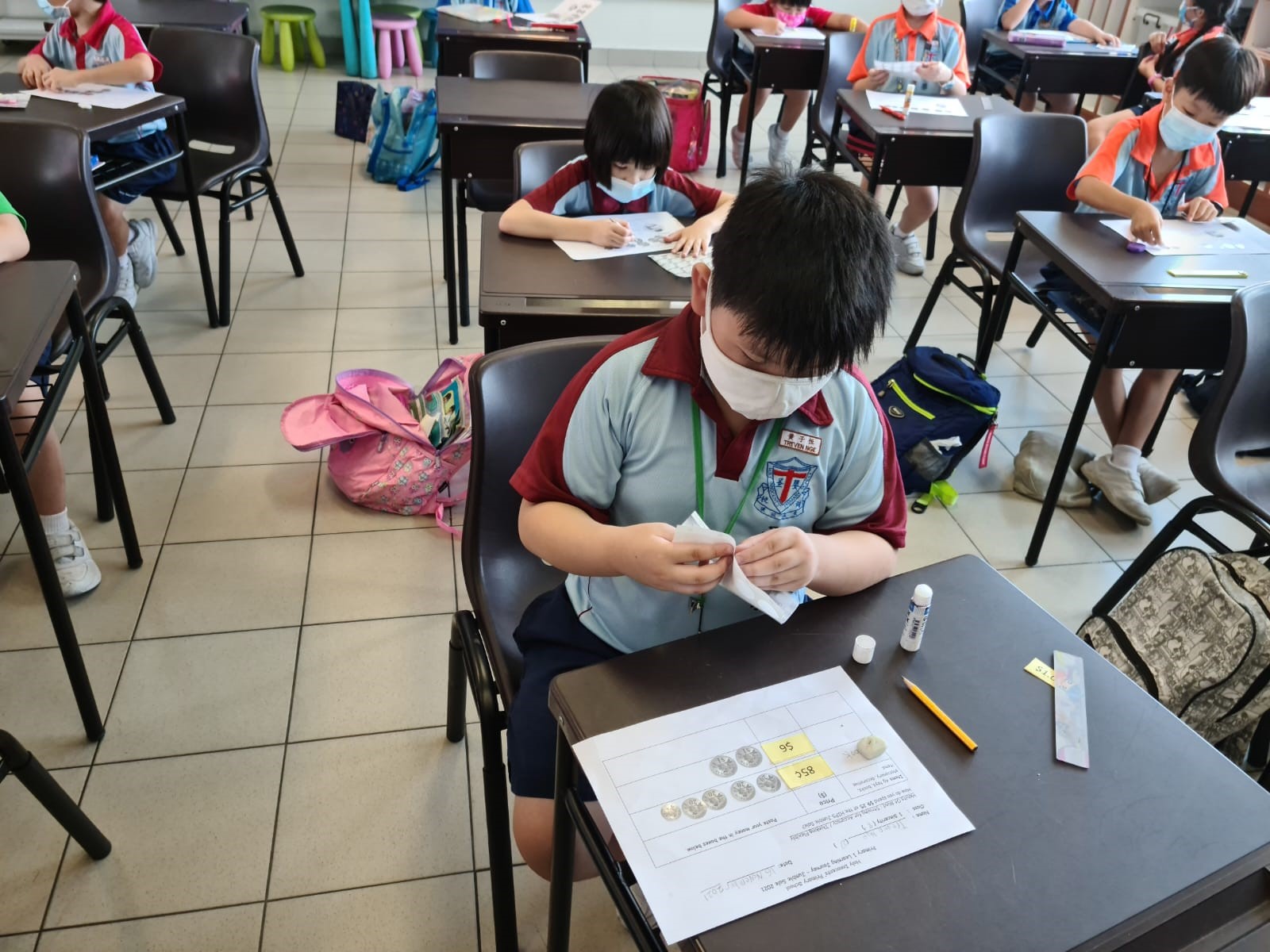数学部门 Mathematics Department
数学部门
Mathematics Department
Department Vision
To develop students to be independent and effective mathematical problem solvers and to nurture in them a spirit of collaboration and continuous learning in an enjoyable learning environment.
Department Mission
Each child an effective and confident problem solver and a dynamic independent learner.
Strategies
1. Concrete-Pictorial-Abstract (CPA) approach
A key Maths pedagogy at HIPS is the Concrete-Pictorial-Abstract (C-P-A) approach, which enables students to encounter Maths in a meaningful way and translate concepts from the concrete to the abstract. The CPA approach helps children learn new ideas and build on their existing knowledge by introducing abstract concepts in a more familiar way through concrete and pictorial modes.
As such, hands-on activities and learning experiences are conducted to help students learn concepts through self-exploration, discussions, and collaborative learning.
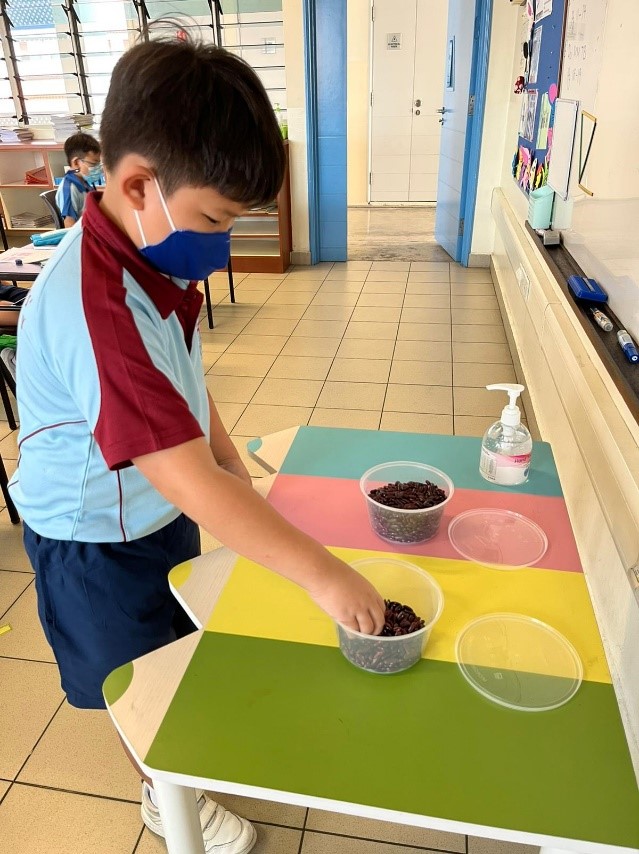
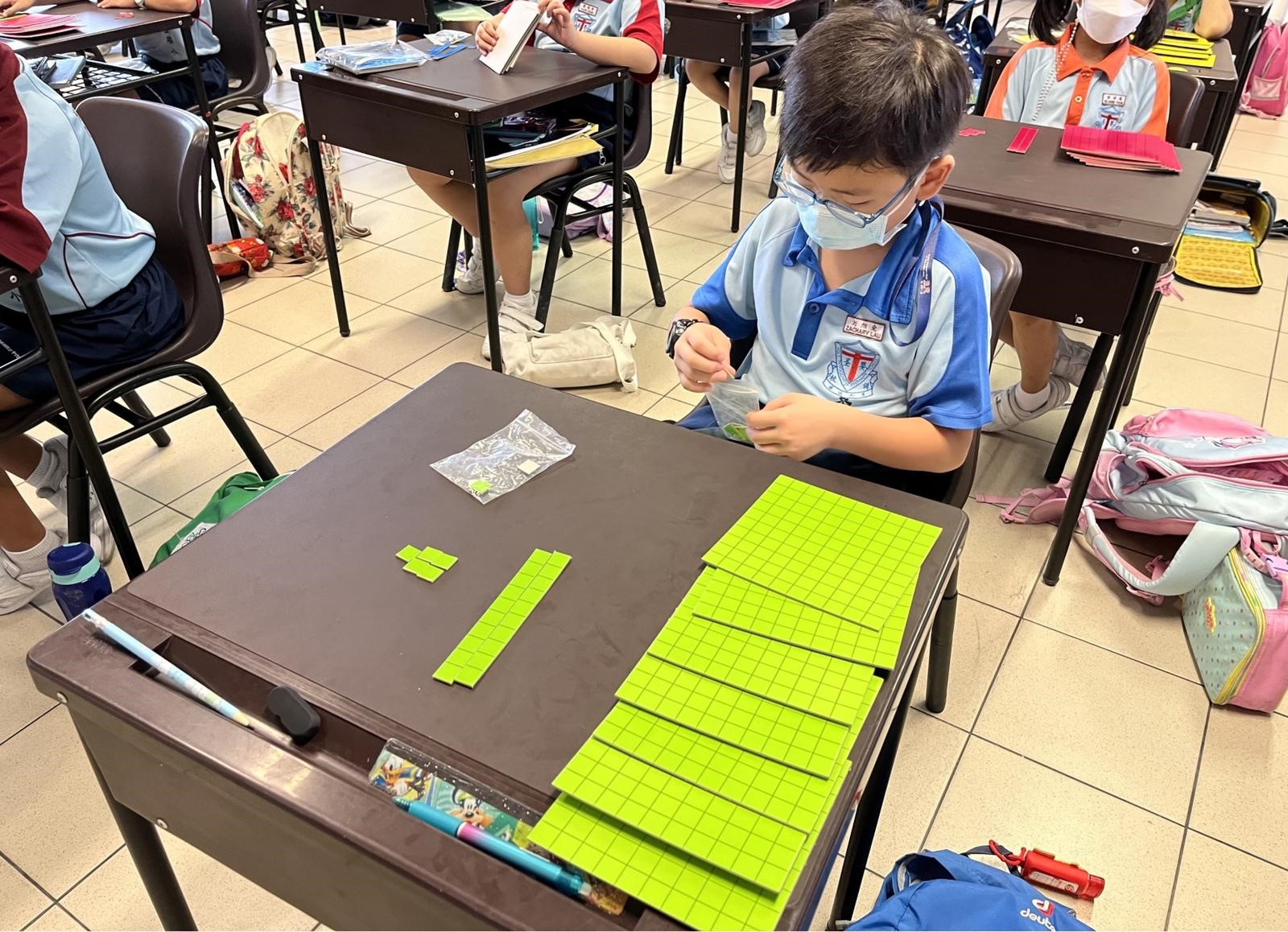
_
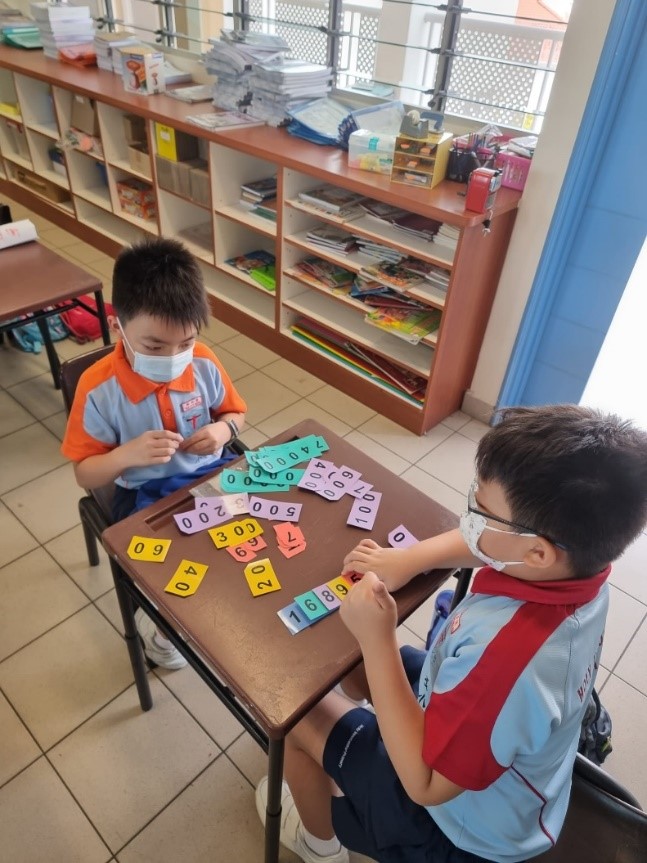 |
 |
Collaborative learning in understanding numbers and its place value
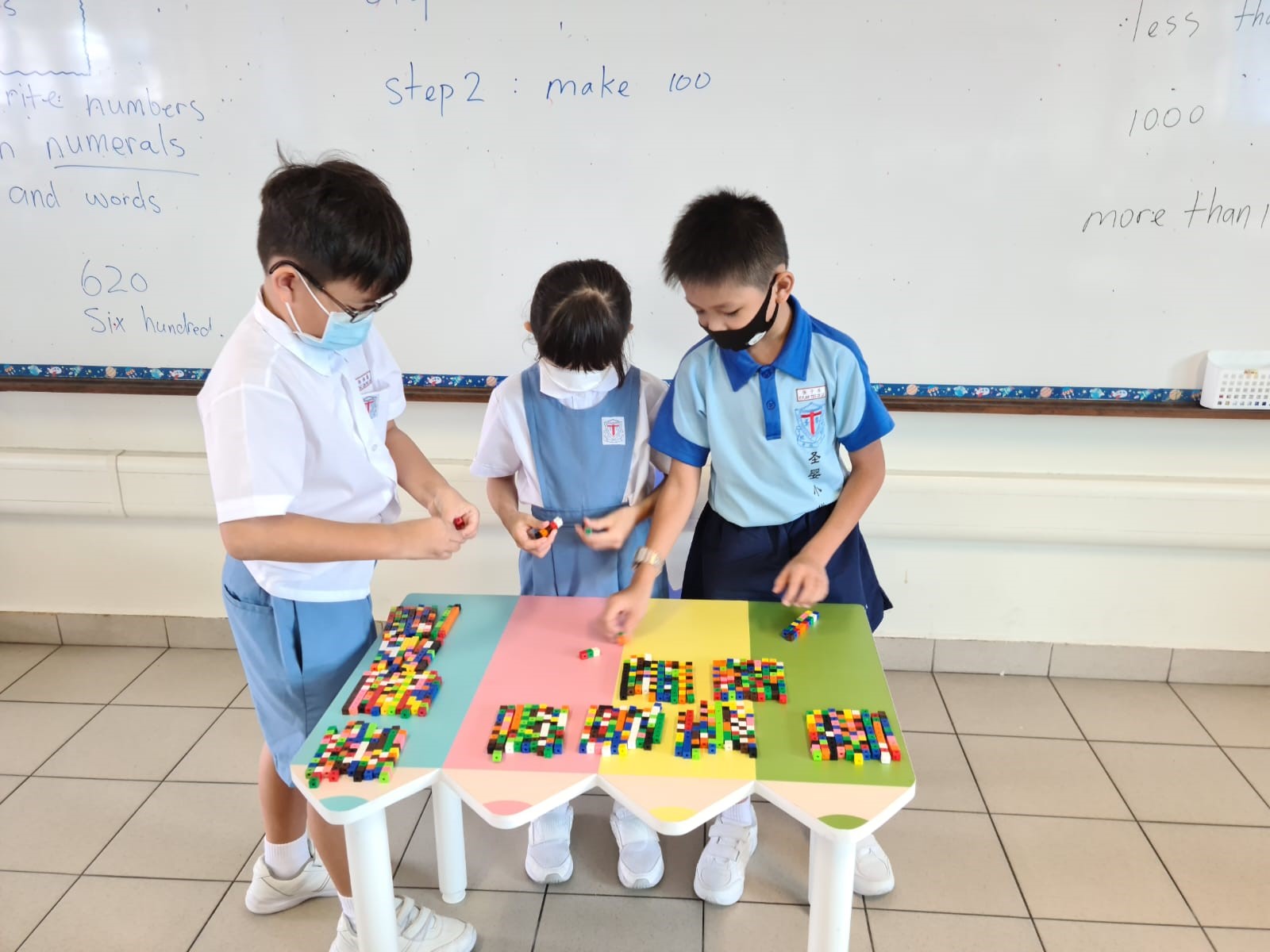
Use of Learning Centres with multi-link cubes to understand numbers
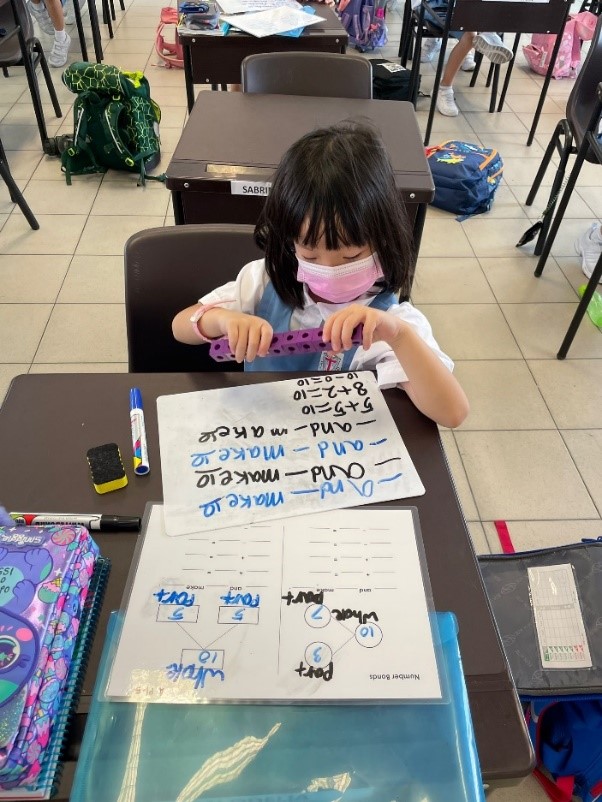 |
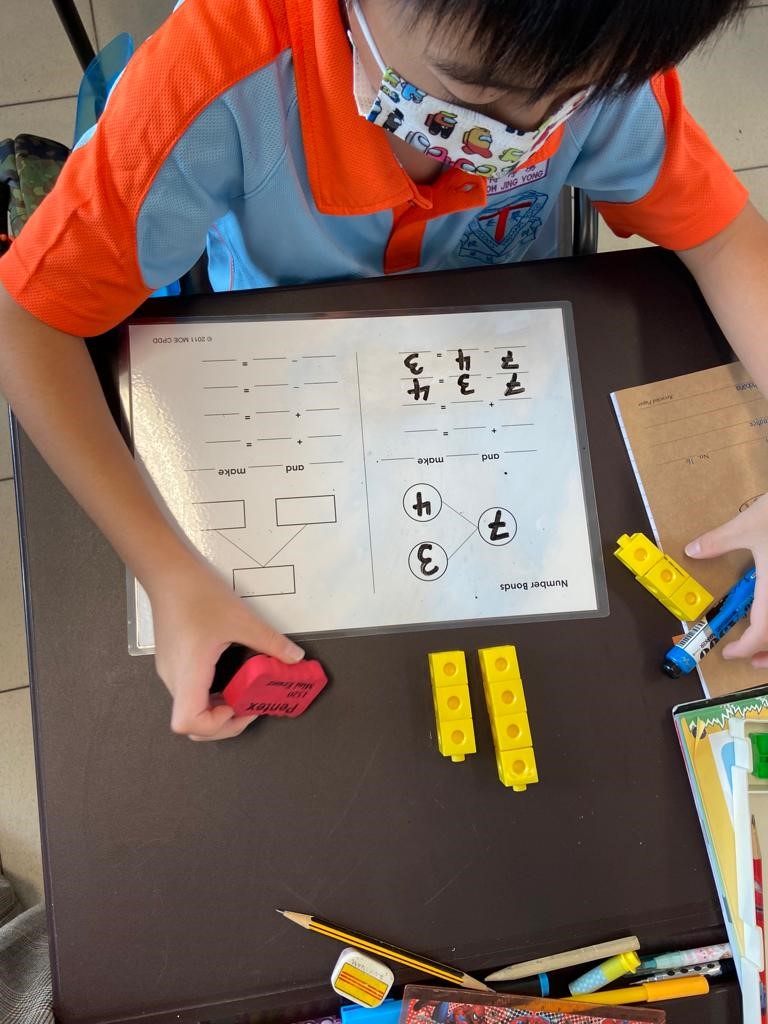 |
Use of interlocking cubes and number bond charts to make connections and establish understanding
 Joy in learning Math through a game of Bingo |
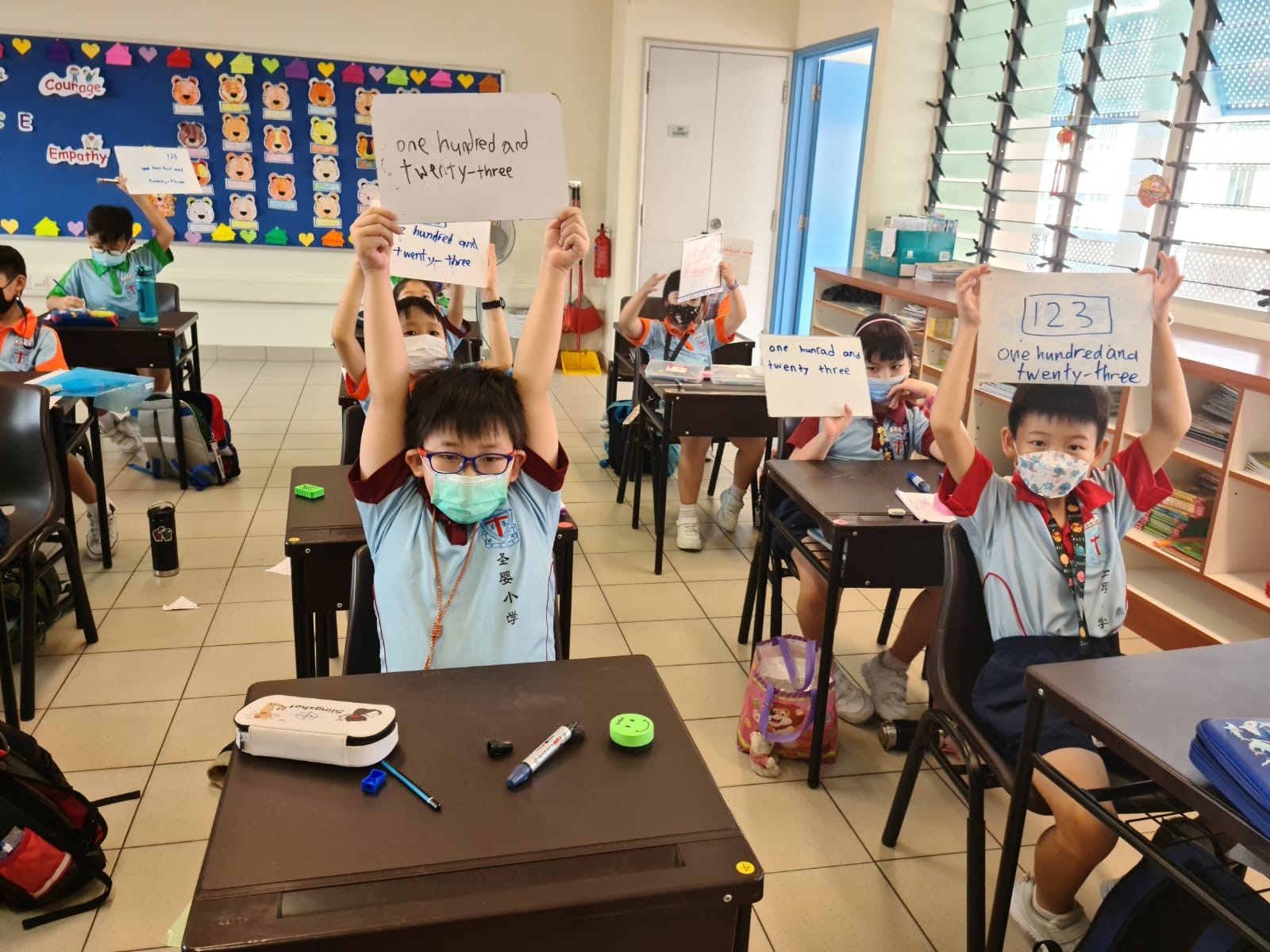 Formative Assessment: demonstrating understanding as a class using mini whiteboards |
Strategies
2. Polya’s 4-Step Problem Solving approach
Another key Maths pedagogy at HIPS is the use of Polya’s 4-Step Problem Solving approach, which is a structured method that guides students in effective problem-solving. Teachers enhance classroom discourse through effective questioning and routines in visible thinking such as Talk Moves.
In class, these talk moves are used to support mathematical thinking and reasoning and drive student discussions. This is especially important when students are trying to clarify their own thinking and share ideas with each other.
A Process Thinking Skills (PTS) Package is also designed to provide a structured approach to enhance the students’ problem-solving skills through the use of heuristics.
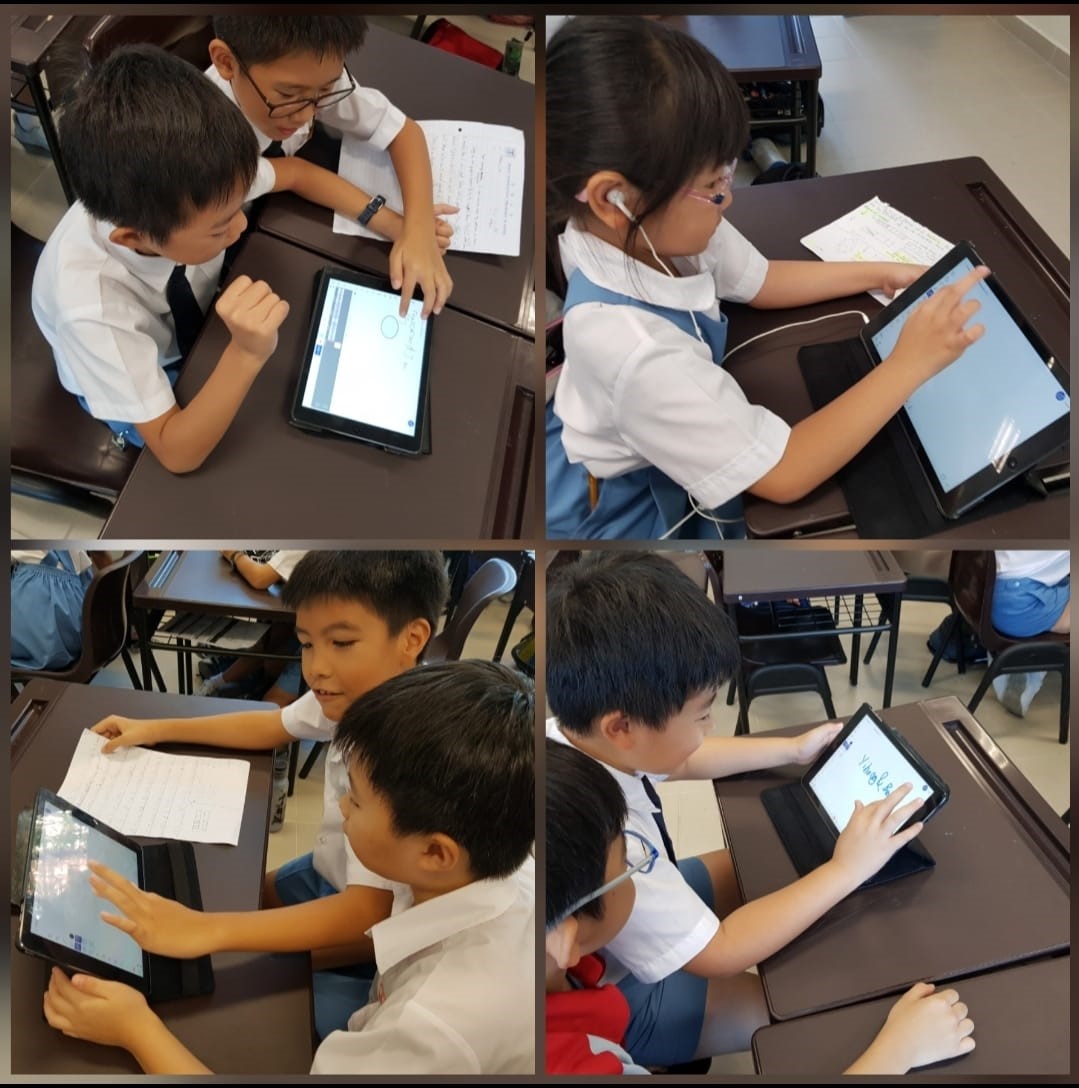
Students using Explain Everything app to present their solutions to word problems in class.
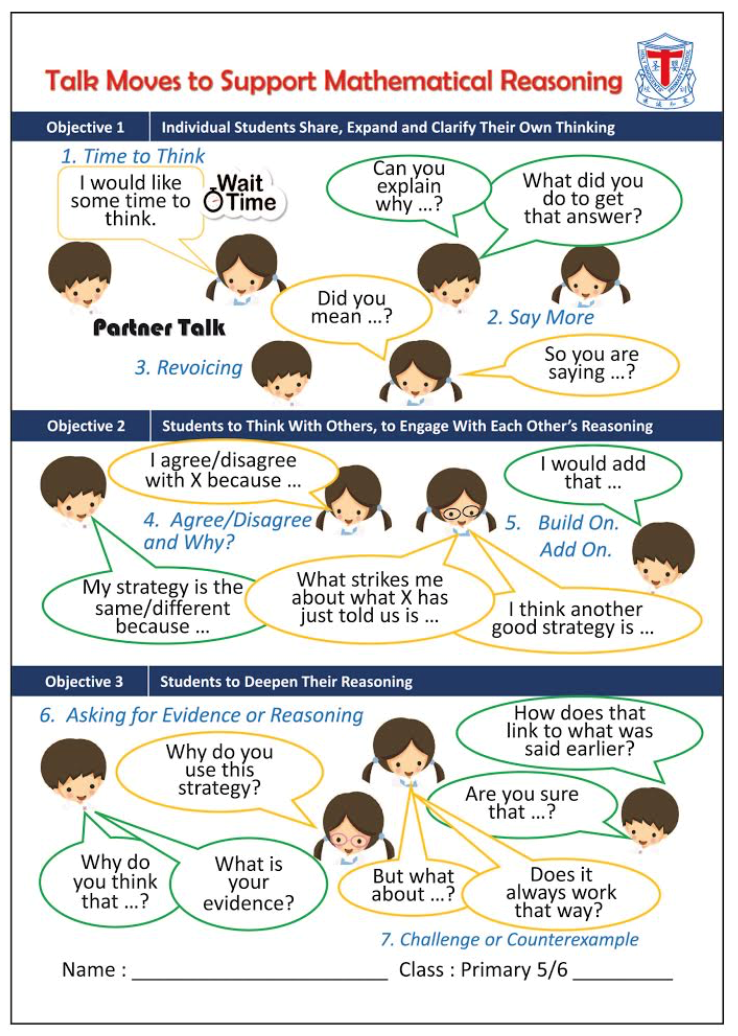
Use of Talk Moves cards to support mathematical reasoning and problem solving
Highlight of Mathematics program & activities
1. 3D Game Programming (P6)
Gearing towards the Science, Technology, Engineering and Mathematics (STEM) education in Singapore, students are introduced to the basics of coding through the 3D Game Programming at Primary 6. The programme aims to promote innovation, creativity, problem solving skills, logic, systematic thinking and collaboration among students. Students are meaningfully engaged and challenged to apply their knowledge and skills in Mathematics, especially in spatial awareness and visualisation to design and program a 3D game that incorporates the application of mathematical concepts.


2. Jumble Sale (P1 & P2)
Unique learning experiences are designed to provide an opportunity for all students to apply mathematical concepts in authentic situations and help them to appreciate the relevance of Maths in everyday life. One such example is the Jumble Sale experience that all Primary 1 students go through to apply what they have learnt from the topic of Money and are introduced to financial literacy concepts such as making spending plans, comparison shopping and money responsibility.
